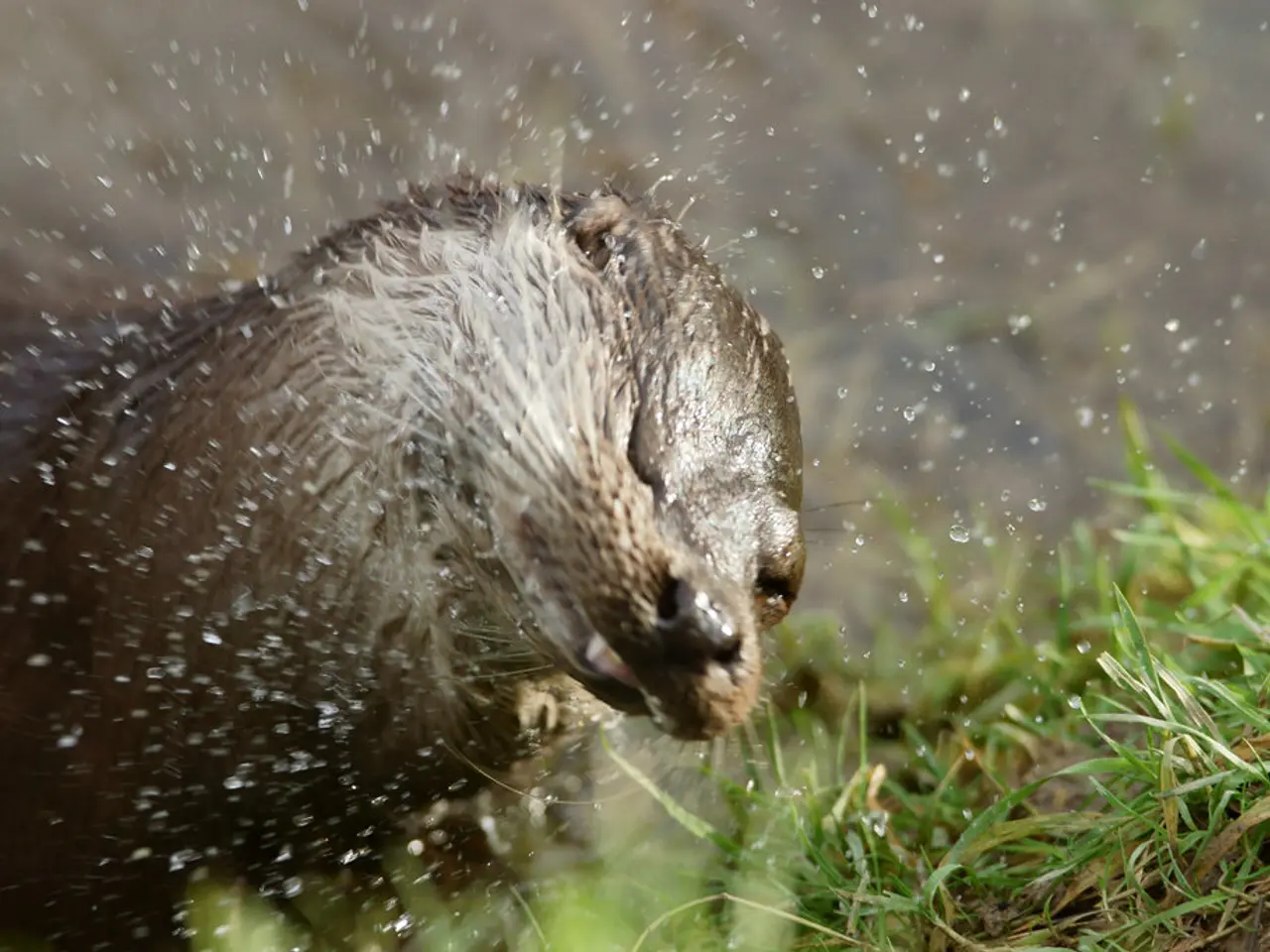Berlin Otter Seeks Permanent Residence
In the heart of Europe, the city of Berlin is witnessing a remarkable comeback of an elusive and charismatic creature – the European otter. This aquatic mammal, once considered extinct in the city since the 1960s, is making a resurgence, thanks to the efforts of conservation organisations and city planners.
The movement and growth of urban otters are primarily influenced by factors such as habitat quality and connectivity, water pollution levels, availability of prey, human disturbance, and successful conservation efforts. Urban otters rely on semi-aquatic habitats such as rivers, streams, and connected green spaces that support fish and other prey species.
In Berlin, the presence of relatively undisturbed suburban forests, riverbanks, and wetlands provides essential refuges and hunting grounds for otters, facilitating movement between suitable habitats. Improved water quality, achieved through banning harmful chemicals and restoring water systems, leads to increased prey availability, supporting otter recovery in urban settings.
However, urban development often fragments habitats, and corridors that allow movement between patches of green and water are essential for dispersal and population expansion. For instance, a more continuous Spree is needed to allow otters living in the Spree to meet those living in the Havel. Barriers between the Spree and Havel have a negative impact on the otter, as they prevent the otters from different areas from meeting.
Human disturbances, such as urban lighting, infrastructure development, and traffic, can impact otter behaviour and movement patterns. Studies on related species emphasize the effects of artificial light and noise pollution on wildlife physiology and activity patterns. For otters, this may translate into temporal shifts in movement to avoid disturbances.
Fortunately, conservation initiatives are making a significant difference. Efforts such as otter holt (den) construction, habitat restoration, legal protection, and public awareness campaigns contribute to increasing population stability and expansion in cities like Berlin. The German Environmental Aid (DUH) and the Foundation for Nature Conservation Berlin (SNB) are working together to protect the European otter, using funds from the hunting levy.
The DUH's "Otter City Berlin" project focuses on the dangers and protection opportunities for the European otter in Berlin. The organisation is not only educating small garden owners and Ufergrundstücksbesitzer about natural banks but also making pressure on the city government to remind them of their responsibilities to make trash cans otter-friendly and conduct otter monitoring. Mitigating danger spots for otters, such as building safe crossing options at bridges, locks, or weirs, and constructing dry tunnels parallel to culverts, could be solutions to help the otter navigate the city.
The European otter is considered an "umbrella species," meaning that measures to protect their habitat also benefit numerous other animals and plants. Biodiversity is crucial for many animal species, including the European otter, as it provides a variety of plant species and habitats.
The European otter expansion is pushing into cities, including Berlin, as suitable territories in the countryside are occupied. The DUH's wildlife series, which includes articles on various Berlin wildlife species, such as storks, hedgehogs, foxes, rats, and otters, provides valuable insights into the city's wildlife. The series can be found online, with each part published every Tuesday from July 15th to September 2nd.
The Brandenburg source regions are considered a significant driver for the increase in the otter population. As the European otter, a subspecies, continues to move back to the capital, Berlin is not just a city but also a promising habitat for this fascinating creature.
Home-and-garden owners in Berlin can contribute to the expansion and survival of European otters by creating otter-friendly environments, such as installing otter-friendly trash cans and maintaining natural banks. The presence of suitable green spaces and riverbanks provides essential habitats for the otters, allowing them to thrive in urban settings.
The improvement of water quality and the construction of corridors connecting various water bodies, like the Spree and the Havel, can significantly enhance the movement and growth of the urban otter population in Berlin. A more continuous and connected water system can facilitate interactions between different otter groups, supporting their population expansion.




